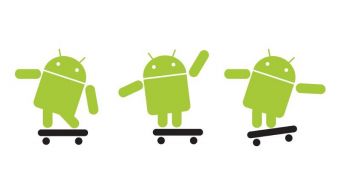November 5th, 2007 marked the release of what seems to be the fastest growing mobile operating system of our times, the Google Android platform. Three years ago, the Mountain View-based Internet giant announced officially the operating system, as well as the Open Handset Alliance (OHA), which is aimed at pushing the platform forward.
One year later, on October 22nd, 2008, the first mobile phone to run under the platform became available for purchase, namely the T-Mobile G1, also known as the HTC Dream.
Three years later, we're looking at a mobile OS that enjoys wide adoption among mobile phone makers and not only.
Today, Android is available on a wide range of other devices too, including music players, tablet PCs, and other devices too, and should soon be packed on even more of them.
The story of Android is rather simple, starting with July 2005, when Google acquired Android, a small, mobile-oriented startup.
One week after announcing the platform exactly three years ago, Google announced the availability of the Android SDK for developers, on November 12th, 2007.
On October 21st, 2008, one day before G1 hit shelves, the platform went open source, and its code was made available on the AOSP (Android Open Source Project) site.
Today's Android-based mobile phones are much more powerful than the G1, and also offer a much improved experience to users.
Google has been hard at work with improving the platform on various levels, including the interface, stability, app support, hardware support, and even related services.
Of course, Google's mobile services are available for other operating systems as well, but none of them sports the same level of integration with them as Android.
Further enhancements of the platform should become available in the very near future, as soon as the next flavor of the platform, dubbed Gingerbread (aka Android 2.3 of 3.0), makes an official appearance.
Take a look at the videos below, available courtesy of Android Police, to make an idea of what Android was in the beginning.

 14 DAY TRIAL //
14 DAY TRIAL //